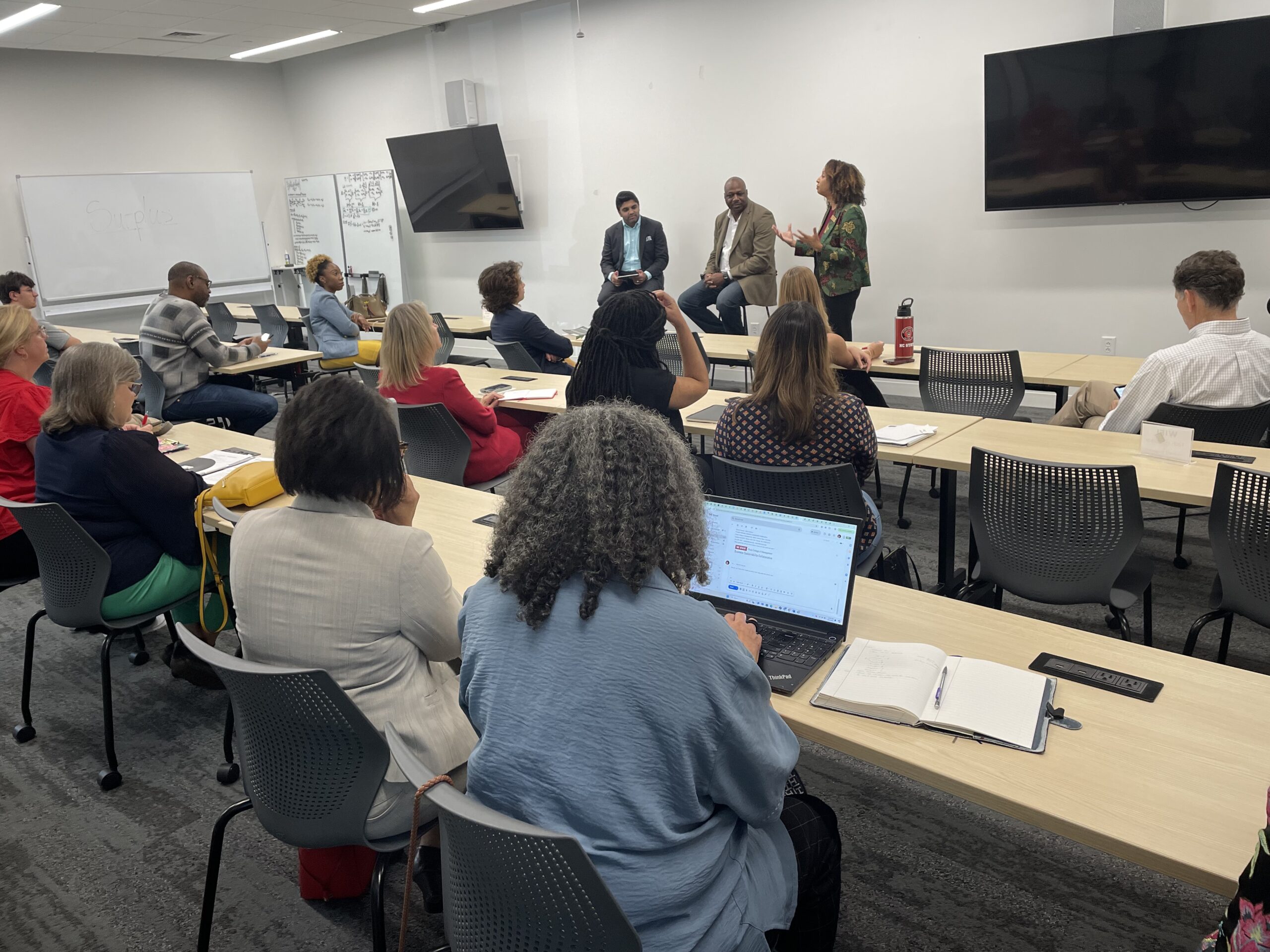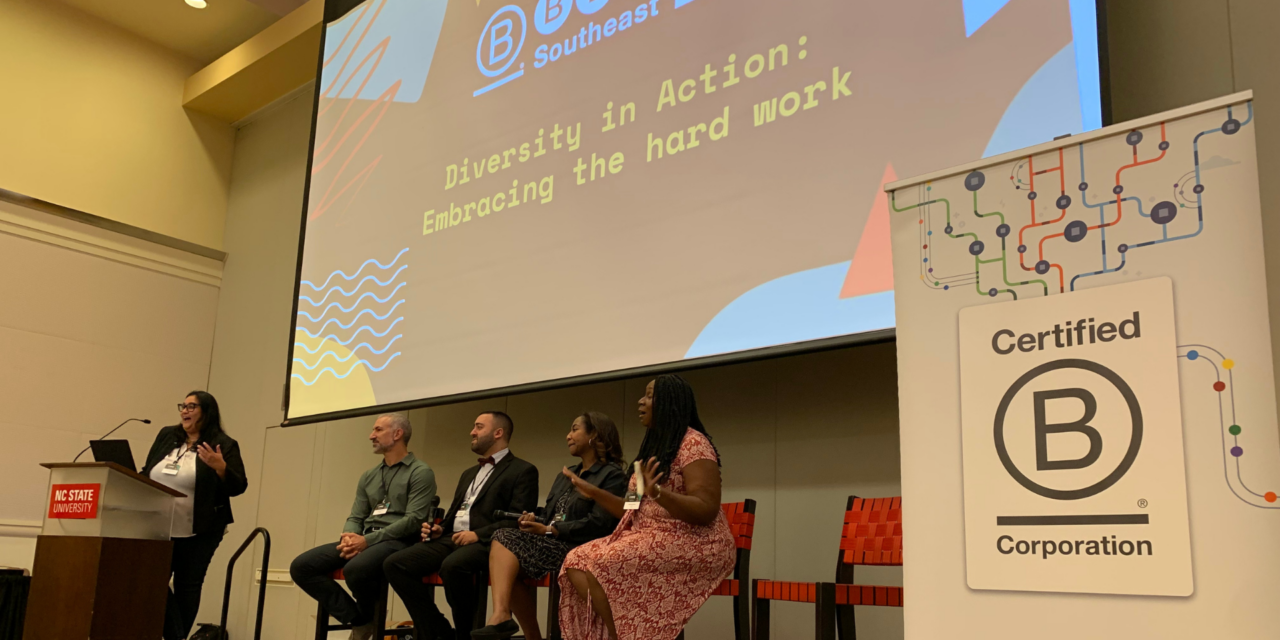DURHAM CYCLISTS ADVOCATE FOR SAFER STREETS

Triangle cyclists are advocating to make safer streets a community priority, in the wake of three recent bike accident fatalities in Durham and Orange County.
Education and increased enforcement of existing laws were identified as areas of precedence during a community conversation on November 22, when more than 80 gathered at a public forum to discuss actions that could drive positive change for cyclists and pedestrians in the city. The event was sponsored by Bike Durham, a coalition formed last year to advocate for local bikers and to connect the community with resources on cycling issues.
Advocates hope that the recent events will draw attention to the need to update and more broadly implement the city’s 8-year-old 2006 Bicycle Transportation Plan, and that calls for safety will build momentum for the city’s swift adoption of Complete Streets, a policy geared toward designing roads that accommodate the needs of all users. Complete Streets was adopted statewide by NC’s Department of Transportation in 2009, and it is supported in Durham’s Comprehensive Plan, but has yet to be implemented locally.
“The Durham bike plan is county-wide and is very long-range plan in some respects. It makes recommendations for improvements for every major road in the city, which will take a long time to implement,” says Dale McKeel, Durham’s Bicycle and Pedestrian Coordinator since 2008. However, he notes that it also focuses on priorities and low-hanging fruit like road re-striping that can make a big impact on safety without expensive modifications. Thanks to the 2006 plan, McKeel says Durham now has 33 miles of road with bike lanes or paved shoulders.
But Durham County’s population has grown by more than 100,000 since 2000, far outpacing the goals and plans outlined in the 2006 plan. With the growth and increasing density of Durham’s downtown, bike and pedestrian access and safety issues will only become more relevant, according to Chris Russo, a Bike Durham board member who runs Tilthy Rich Compost, a bicycle-powered business. “This is a growing need, even more so than five years ago,” says Russo.
As Durham considers its future, U.S. cities like Portland and Pittsburgh offer a hopeful blueprint for transforming urban spaces into vibrant biking communities. A recent Atlantic article about Pittsburgh’s swift installation of a network of bikeways attributes success to strong support from the business community, city staff, and elected officials.
“There are a lot of cities we can learn from,” says McKeel. He points to Atlanta, Raleigh, and Charlotte as regional examples that have implemented cycle tracks, bike shares, and other innovative programs. “That’s one reason why there has been discussion of updating the bike plan. A lot of new ideas have come out since it was written, and the toolbox of available treatments has changed.”
Jack Warman, chair of Bike Durham, agrees. “Durham doesn’t have to reinvent the wheel here, NCDOT and Charlotte both have developed Complete Streets programs and are building a body of knowledge and experience that we can build on,” he says. “The most concrete and immediate step I think Durham’s leaders can take is to put Complete Streets practices into play with defined processes for community engagement and road design.”
Durham has been recognized as a Bicycle Friendly Community, earning a bronze rating in 2010 and again this year. However, its report card from the League of American Bicyclists details many areas for improvement, such as expanding bike lanes, lowering and enforcing speed limits, and directing more resources toward infrastructure and education.
These suggestions, and other ideas, will be discussed at a December 9 meeting of the Community Engagement Committee of Durham’s Bicycle Pedestrian Advisory Commission (BPAC), which advises the City Council and Board of County Commissioners on policy and planning issues. The open meeting will provide a chance to set priorities for the coming year, and to incorporate lessons and feedback from the recent forum.
BPAC and Bike Durham are not the only community groups advocating for safer streets, and Warman says his organization plans to cultivate relationships with strategic partners in the coming year.
“Many of the goals of bike advocates are consistent with neighborhood groups—better street designs, lower speeds and more active enforcement are good for cyclists as well as folks out jogging, walking to school or visiting a neighbor,” says Warman. In fact, the Inter-Neighborhood Council adopted a resolution this year, endorsed by groups including BPAC, which called for more enforcement of speeding, especially in residential areas. McKeel notes that this is now a defined priority in the Police Department’s recently adopted strategic plan.
At the city level, Warman says he sees Director of Transportation Mark Ahrendsen as an ally in their cause, though they may not always agree. “We also definitely have some supporters in City Council and, I think, among the County Commissioners and are grateful for their participation in these conversations,” says Warman. “I know at least one council member was at our public forum, and I look forward to seeing how council and the county commissioners respond to the recent tragedies and the community’s response.”
Warman points to local and regional Safe Routes to School advocates as partners as well. “Developing routes, and building awareness among school officials, students and parents is important and we look forward to working more with them.”
Education about safety is critical for everyone on the road. Since summer of 2013, Durham has been part of an education campaign called Watch for Me NC, organized by NCDOT, which was first implemented in the Triangle and then expanded to other areas of the state. Through public service announcements, bumper stickers, rack cards and other media, the campaign directs safety messages to motorists, as well as to cyclists and pedestrians. McKeel said the messages came from looking at crash data, particularly in urban areas, and focusing on ways to decrease those types of accidents.
At the forum, cyclists discussed the importance of visibility and predictable riding behavior. Warman recommends that cyclists take a class in order to understand traffic patterns better. “The American Bicycling Education Association’s Cycling Savvy Program and the League of American Bicyclists’ Ride Smart Program both can help folks who want to get around by bike do so more safely and comfortably,” he says.
To all road users, he advises: “Relax, be patient, and think of everyone else out on the road as your neighbor. We’re all just trying to get around, and being more respectful of one another will help everyone do so more safely.”
- Categories:


